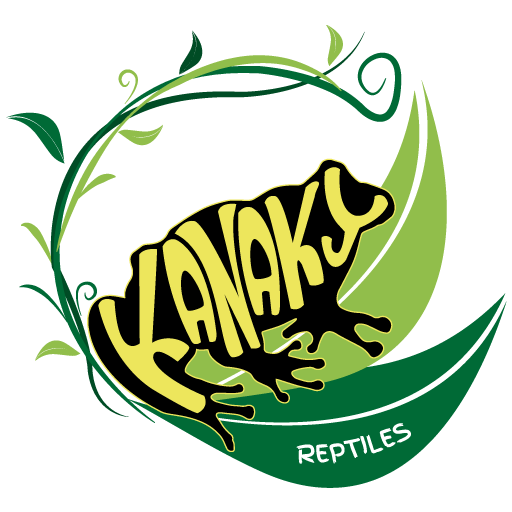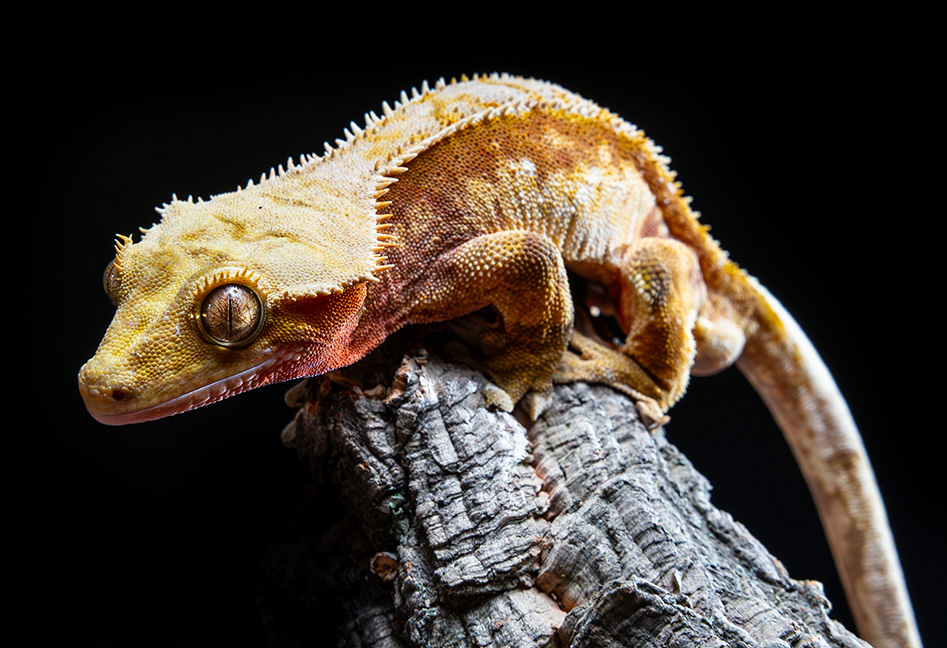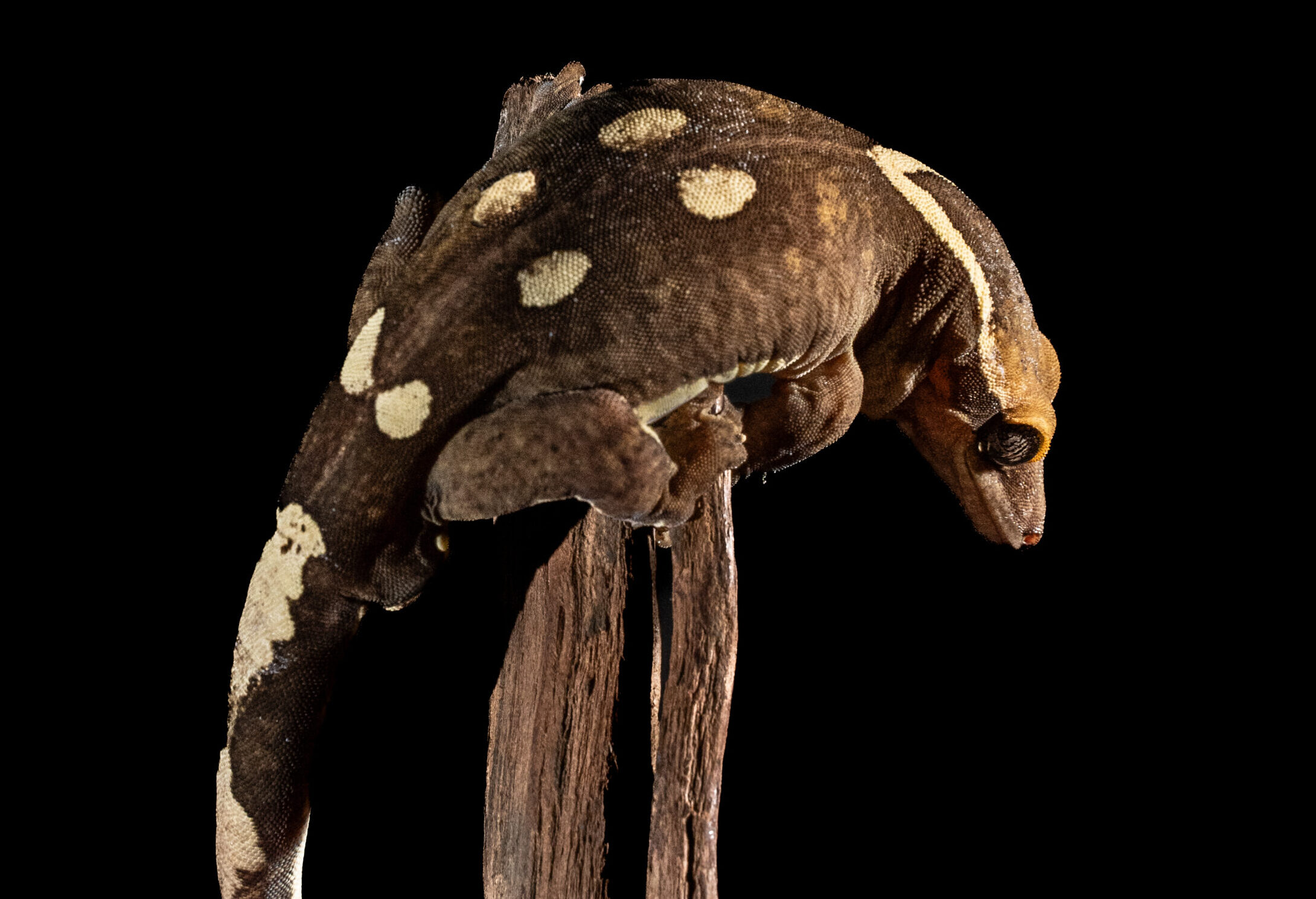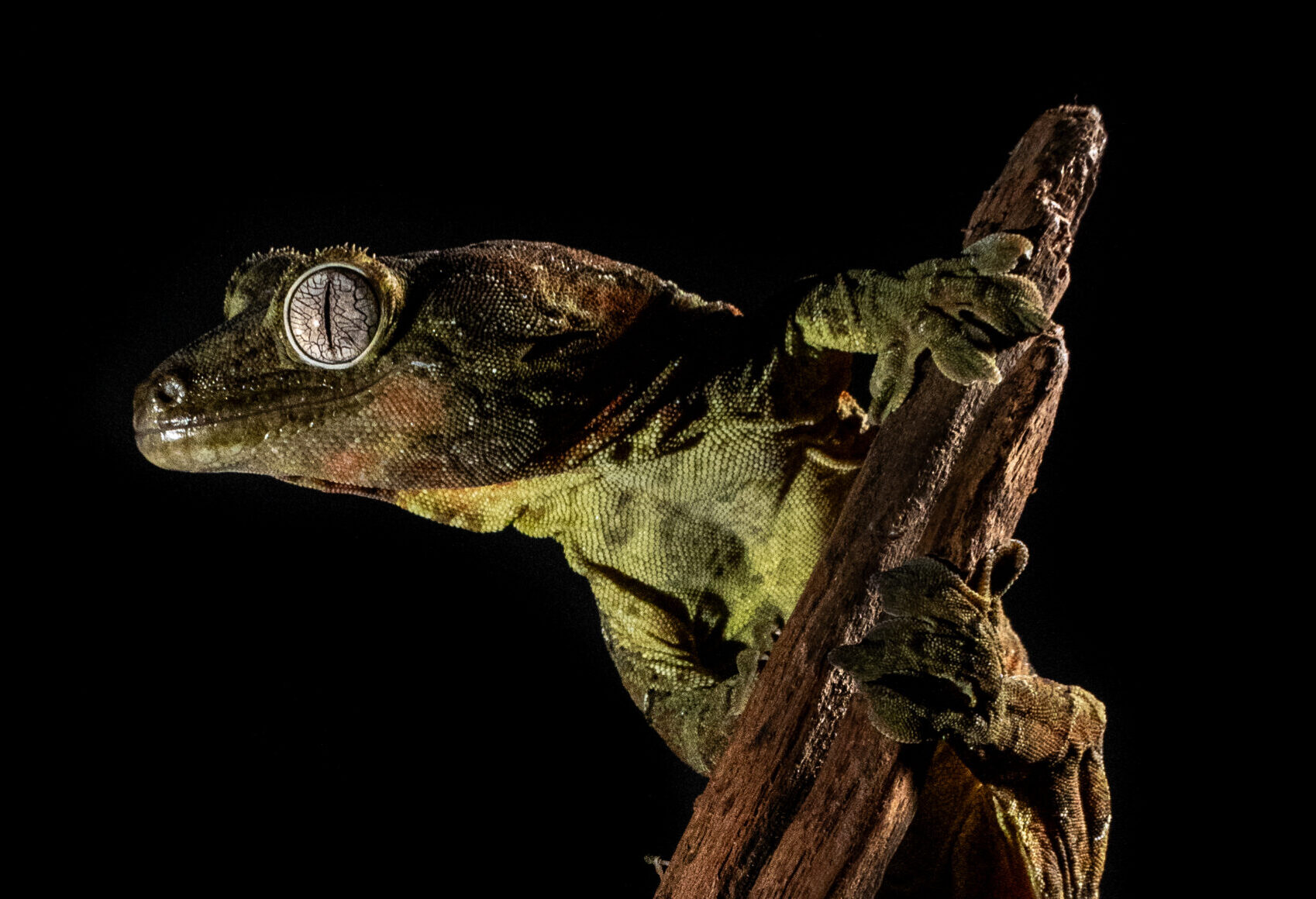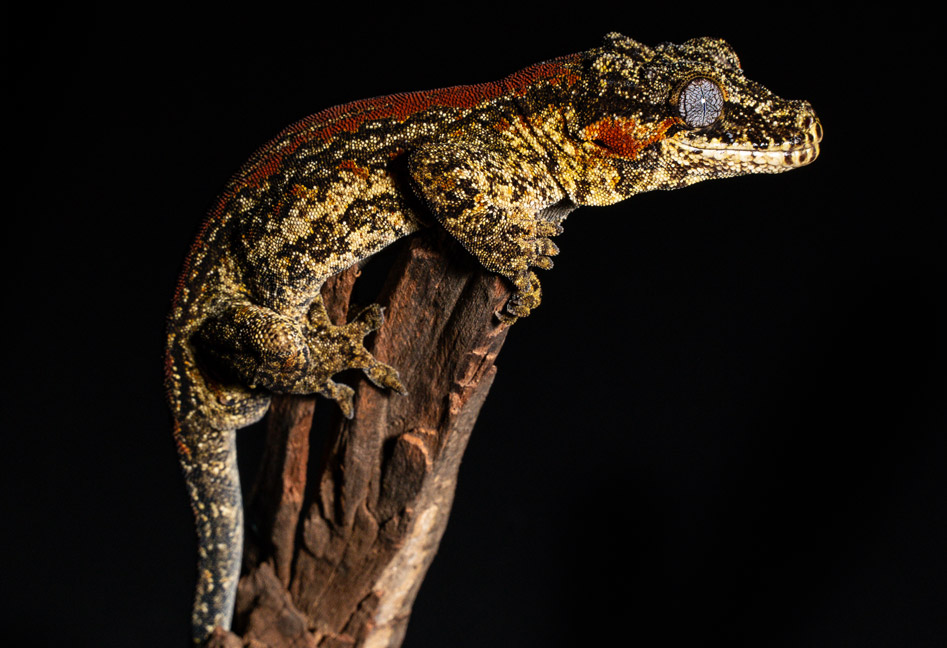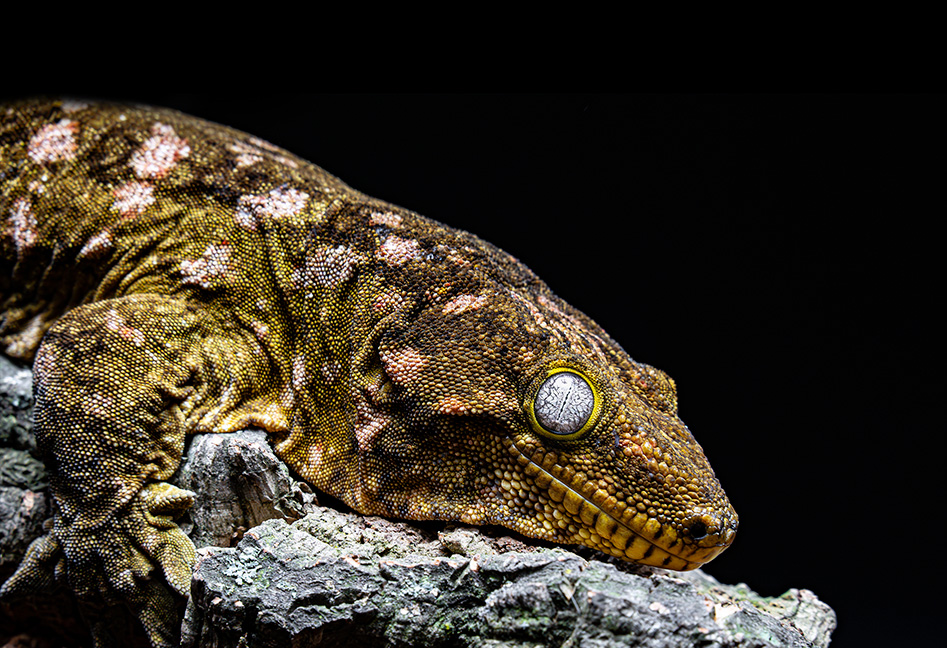Keeping
Bauer's chameleon gecko (Eurydactylodes sp.)
Origin
Gender Eurydactylodes consists of four species, E. agricolae, E. vieillardi, E. occidentalis y E. symmetricus. All species are endemic to New Caledonia and inhabit thickets and sclerophyllous forests. They can be found hanging from low shrubs or similar vegetation. These arboreal geckos rarely leave the vegetation and tend to remain relatively exposed even during the day rather than seeking hiding places or shelters. They have strong legs and tails that allow them to cling tightly to small vines and branches. They are primarily nocturnal, but move to some extent during the day.
Many people wonder what is the difference between these species.
Sometimes it can be difficult to distinguish between them. Eurydactylodes agricolae y E. symmetricus have the yellow corner of the mouth running continuously to the base of the ear. To see this, hold the animal gently and with your thumb gently stretch the skin between the mouth and ear to see if the yellow band runs continuously. And between these two species, the E. agricolae has the scales of the head of small size and very irregular, whereas E. symmetricus has very well defined large scales that contrast with very small scales on the rest of the body. E. symmetricus also has granular bulging scales on the neck that none of the other 3 species have.
On the other hand, we have the species Eurydactylodes vieillardi y Eurydactylodes occidentalis. Both have the corner of the mouth interrupted by a line of scales that makes the yellow band not continuous from the mouth to the ear. E. vieillardi has smaller head scales, similar to the E. agricolaewhile E. occidentalis has more symmetrical and larger frontal scales.
Housing
The Eurydactylodes are fairly easy to maintain as they have no difficult requirements for housing, temperature, humidity or feeding. They require a little more effort to maintain properly than other New Caledonian geckos, but nothing beyond the ability of an intermediate keeper.
Specimens from hatchlings to juvenile size we recommend keeping them in plastic containers with good ventilation without many decorative elements. This will facilitate the task of cleaning and feeding control since they are born very small.
As they grow, they can be moved to a definitive terrarium. For a pair or trio we would recommend a minimum of 30x30x50cm decorated with many thin branches that they can easily embrace. Vines, natural or artificial plants and small diameter trunks are the best option. Larger diameter branches will not be used as much, so pay close attention to what you choose, keeping in mind that they will spend almost 100% of their time here.
Adult males are likely to fight if housed together, so be sure to have only one male per terrarium.
Temperature and illumination
These little geckos really like to bask in the sun from time to time, so we recommend a low wattage ultraviolet lamp on top of the terrarium during the day. The light can be turned off completely at night allowing a natural temperature drop. A 10-20w LED bulb should be sufficient to illuminate and heat the terrarium depending on the ambient temperature and size of the terrarium. The warm zone of the terrarium should be around 27-28ºC.
It is absolutely necessary that there is enough space in the terrarium so that they can retreat to a cooler area of 22-23ºC.
What about UVB rays? Again, many keepers do not use UVB lighting and have no problem. Those who provide access to UVB lights report that their geckos are more active and have more vibrant colors. Since these geckos do not hide during the day, it would make sense that they get some UVB exposure in the wild and can benefit from it in captivity. The verdict on UVB is that it is optional but recommended.
Humidity
Finding standing water to drink does not come naturally to these geckos, so it is important to mist them once or twice a day with enough water to provide droplets on the foliage and sides of the terrarium for them to lick. It is not necessary to drench the enclosure with water, spray well while making sure the enclosure dries completely between each misting. Although they do not normally drink from dishes, we always make sure they have a shallow dish with clean water as a backup source. A thirsty gecko will drink wherever it can find water.
Feeding
The best way to feed your geckos and keep them healthy would be to combine a powdered diet with live insects.
There are many products on the market designed exclusively for feeding geckos. Preparations based on fruit, vitamins and in many cases insect meals. Brands such as Gecko Nutrition, Rhacofood diets, Repashy superfoods, Pangea,... are easy to find in stores specialized in exotics.
As live food we will use micro crickets or Drosophila funebris for the smaller animals and slightly larger crickets and blaptids for the adults. They are not as voracious as other geckos so it is best to feed small insects. Adults will also enjoy a little fruit fly (Drosophila hydei) 1 or 2 times a week.
It is important whenever live feed is provided to supplement insects with calcium powder and vitamin D3.
Behavior: unique defense mechanism
When they feel threatened or agitated, the Eurydactylodes are capable of secreting a sticky substance with an unpleasant odor from caudal glands located on the sides of their tails. The secretions do not appear to irritate human skin, but there are reports that they cause very intense irritation to the eyes. If you are unlucky enough to get a smear, it goes without saying, wash it out immediately. If the sticky substance gets into your eyes, rinse them for 10 to 15 minutes. If the irritation does not go away after a day, you may need to seek medical advice. Geckos that are accustomed to human interaction will not do this as long as you are careful not to scare them too much. However, pinching the tail may cause the gecko to shoot its goo as well.
One of the great aspects of this genus is that they do not autotomize their tails, meaning that they do not voluntarily shed them in response to predators or extreme stress. If somehow the tail is partially or completely severed, it will regenerate.

